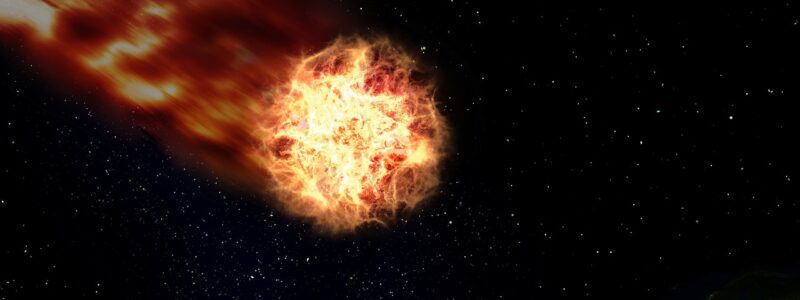Origin of Life Molecules
Origin of life molecules are those molecules that are required for even the simplest life. They may form part of the structure of proteins (such as amino acids), or of DNA or RNA (such as the sugar ribose).
The start of these origin of life molecules has never been explained. These molecules are formed in too low concentrations or not formed at all in natural conditions.
Some origin of life molecules needs to be entirely of either the right or left-handed variety.
One of the factors needed to make the molecular machinery work correctly is the right kind of molecules at the right time. It is like a car assembly line. You do not need a seat cushion while you are building an engine.
In a cell, just like in a car, parts must fit together correctly. A right-handed screw may be needed during assembly, where a left-handed one simply will not work. One cushion shaped a certain way may fit on the left side of the car while it will not fit on the right side.
The same situation occurs in the cell. Proteins are made of amino acids. There are twenty amino acids used in life molecules, and all of these amino acids except glycine have a left-sided variety and a right-handed one. The handed variety is the L version while the right-handed variety is the D version.
Life proteins use the L version, while life sugar molecules use the D version. The sugar molecule “ribose” used in DNA is always and only the D version, for example.
Handedness of Molecules is Called Chirality

Image by OpenClipart-Vectors from Pixabay
The “handedness” of molecules is known as “chirality.” Chirality occurs in molecules that have at least four atoms in their structure. Chirality is very important in trying to figure out how the origin of life molecules formed.
A chemical reaction produces equal amounts of L and D molecules in the laboratory. Equal amounts of L and D molecules produces a “racemic mixture.” Racemic mixtures of amino acids and sugars strongly inhibit the formation of other amino acids.
Putting a wrong handed amino acid into a life protein may completely ruin the protein’s function. Proteins have to be folded in a certain way for them to work well. This folding requires interaction among all the amino acids in the protein. Therefore, proper folding of the protein may not occur if one of the amino acids is not the correct handedness.
Nucleic acids that use the wrong-handed ribose sugar actually may inhibit DNA from being able to copy itself. Two strands of DNA may be unable to bind to each other properly and ruin the double helix formation. That would mean the cell could not copy itself, or a gene may not function.
Any theory as to the origin of life molecules has to explain how only right-handed sugar molecules became incorporated into DNA.
The main problem is trying to determine how a supply of only either the right or left-handed molecules were available.
Early Formation of Handed Molecules
The availability of only the one-handed variety of amino acids and sugar molecules must have occurred very early in life creation. This is because all life uses one-handed molecules from the simplest virus to humans.
Early life could not occur without the availability of these handed molecules.
The problem is that it is very difficult to produce a solution of only one-handed molecules. This difficulty is even with the most modern chemistry laboratories available.
There is no difference in how these one-handed molecules behave in a chemical reaction. However, wrong one-handed molecules used to build a larger molecule may affect its structure and function.
There is no known way to produce single-handed molecules only during a chemical reaction. A chemical reaction produces an equal amount of both the right handed and the left-handed molecule. This means that it is unlikely that any source for exclusively one-handed molecules.
Producing solutions of only one-handed type of molecule is difficult in a chemistry lab. It usually involves the destruction of either the right or left handed molecule leaving the other behind.
There have been many attempts to find a natural way to form single-handed solutions to explain origin of life molecules. So far, these attempts have been only partially successful.
On The One Hand

Image by Gerd Altmann from Pixabay
There are only two physical mechanisms known for increasing the concentration of one-handed molecules. These are,
- photochemical (light-induced chemistry) reaction,
- particle physics phenomenon which is probably not applicable
Polarized light that is concentrated and at the right wavelength can induce significant chirality. However, there is no natural source of this type of light other than a tiny amount of daylight. This amount falls far short of what is needed to generate an excess of one-handed molecules.
Parity violations in electroweak interactions is a particle physics phenomenon that is far too weak in nature to produce chirality.
Organic chemist William Bonner noted,
I spent 25 years looking for terrestrial mechanisms for homochirality and trying to investigate them and didn’t find any supporting evidence. Terrestrial explanations are important or nonviable.
On The Other Hand

Image by Karen Arnold from Pixabay
Some scientists suggest there might be an astronomical cause for chirality. They have suggested polarized light coming from neutron stars and black holes.
The problem with this line of investigation is that only incomplete handedness is produced. Laboratory experiments only produce a twenty percent solution of a one-handed variety. The light does this by destroying either the L or the D variety and not through making more molecules.
Neutron stars only deliver about 40% polarized light. Also, neutron stars generate large fluctuations in the degree and intensity of polarized light. This variability either destroys the one-handed molecules previously made or produce too little to be of significance.
Neutron stars also make large amounts of X-rays, gamma rays, and ultraviolet light. Molecules that are close enough to a neutron star to make homochiral molecules receive a large amount of other radiation. This other radiation acts to destroy any homochiral molecules that previously may were previously made.
In summary, astronomers know of no process that could produce only homochiral origin of life molecules.
Production and Destruction at the Same Time
Astronomers note another problem with the production of homochiral molecules from astronomical sources. One wavelength of life might produce molecules of a one-handed variety. However, another wavelength would destroy those one-handed molecules.
This places additional restrictions on the light needed for homochirality. The light would have to be monochromatic or only of one frequency.
Neutron stars produce circularly polarized light in a wide frequency band through multiple frequencies. This makes them not acceptable as a natural source of homochiral molecules.
The broadband of circularly polarized light could not produce an only one-handed variety of the origin of life molecules needed.
Sources of Chiral Molecules from Elsewhere

Image by Родион Журавлёв from Pixabay
Scientists have proposed another source of homochiral molecules other than around stars. They propose meteorites brought them to earth. Over millions of years, there might be enough homochiral molecules deposited on Earth to make life possible.
Astrobiologists suggest some form of amplification might have occurred to concentrate the homochiral solutions. Somehow, these homochiral molecules are them incorporated into amino acids and protein to enable life.
The major problem with this conjecture is only the simplest amino acid glycine has been seen in space. Many different organic molecules have been seen in our galaxy and elsewhere but little in the way of amino acids. This observation makes the explanation of the origin of life molecules more difficult.
Murchison Meteorite
The Murchison meteorite exploded over Murchison, Australia and shattered before it hit the ground. About 1300 pounds of the carbonaceous chondrite meteor were removed from streets and yards. The largest piece weighed about fifteen pounds.
Samples of the meteorite were snatched up and sent for analysis. The analysis shows seventy-four amino acids. Some of these amino acids had never been seen before on Earth. Also, chemists were able to demonstrate a slight (1-9%) excess of the left-handed varieties in six different amino acids.
The biggest problem is whether there was any contamination associated with the meteorite as it hit the ground. Most of the pieces lay for several weeks in people’s yards on in streets. Some of the meteor even landed in manure with obvious contamination.
Scientists did an analysis of amino acids found on the surface against those found deeper in the meteorite. It was thought that the inner part of the meteorite should have no contamination from Earth sources.
The results showed a higher concentration of amino acids on the outside compared to the inside suggesting some contamination. The scientists noted,
These results indicate that the outside of the meteorite had been exposed to significant terrestrial contamination and serve as a warning that samples of the Murchison meteorite can be affected to varying degrees by terrestrial influences.
Nakhla Meteorite
The Nakhla meteorite fell in the Nile River Delta in 1911. This meteorite had about 20% greater amounts of left-handed compared to right-handed amino acids.
Interestingly, the most abundant collection of amino acids in the Murchison meteorite was not present in the Nakhla meteorite. Scientists have concluded there was significant Earth contamination of the Nakhla. This contamination would not be surprising since it was harvested in 1911.
Tagish Lake Meteorite
The Tagish Lake Meteorite was the most pristine meteorite ever discovered. This was from northern Canada and was less contaminated than others.
This meteorite landed in freezing water and was not harvest for about a week.
However, airborne contamination can also significantly affect the amino acids found on the surface. This makes the identification of origin of life molecules other than earth sources more difficult.
Influence of Heat and Time
Scientists believe chiral molecules could be brought to earth through extra-terrestrial sources. Unfortunately, most of the fragile amino acids would be destroyed by heat during entry through the Earth’s atmosphere. This head can reach several thousand degrees and effectively sterilize the meteorite of organic chemicals.
Also, experiments show that homochiral molecules become racemic over time. The rate at which homochiral molecules become both right and left-handed varieties depends upon temperate as well.
Amino acids are also destroyed by ultraviolet light, X-rays, gamma rays, and high or low temperatures. They can also be destroyed by acidic or alkaline environments.
The challenge for naturalist biologists is to determine how amino acids could be spared destruction landing on Earth. They must also determine a way for them to be incorporated into life. The way this could occur is yet to be determined.
Sugars

Image by jan mesaros from Pixabay
This discussion is primarily about amino acids becoming incorporated into proteins. Amino acids are not the only life molecules that an abundance of one-handedness.
Unlike amino acids, life sugars are primarily in the right-handed variety. This lack of discussion may be because sugars are missing in meteors. They have not been seen in any meteorite to date.
None of the important five and six carbon ringed sugars (especially ribose deoxyribose, glucose, lactose, or fructose) have been seen.
The closest was the discovery of a three-carbon sugar in the Murchison and Murray meteorites.
The absence of life sugar molecules is difficult to understand if the Universe is permeated with life. Life as we know it would not be possible without sugar molecules. These sugar molecules are used in DNA, RNA, and metabolism.
Conclusion
Recent decades have only added a large question mark as to how life might originate on Earth. Life molecules are notoriously difficult to accumulate in the same environment.
These molecules are difficult to produce on earth in the right form. The fact that life amino acids and sugar molecules are of a one-handed nature is particularly difficult to explain.
There is little chance there could be enough amino acids or sugars in a meteorite or comet to lead to life. Seeding from out space was once thought to be a viable explanation for chiral molecules. This hope now seems to be fading
Some scientists suggest life might first have evolved with both left and right-handed amino acids and sugar molecules. However, achiral organic chemistry is even more difficult than the chiral form.
Achiral chemistry requires many additional steps with new molecules and molecular pathways. These additions only complicate origin of life scenarios.
Stanley Miller used this approach in recent experiments. He suggested the earliest molecules might involve achiral chains that later evolved to using only chiral ones. So far, this new avenue of research has yet to demonstrate any way our current chemistry might have naturally evolved.
References
Rana, Fazale;et al, Origins of Life, RTB Press, 2014




